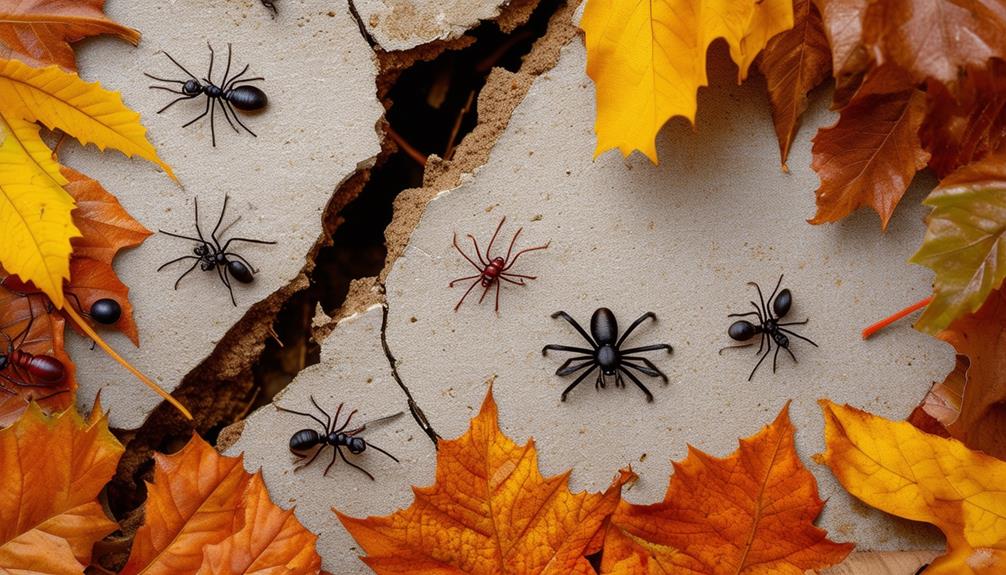Understanding the activity patterns of snakes, particularly their nocturnal behavior, is crucial for those who live in areas where encounters with these reptiles are common.
Snakes, being ectothermic creatures, rely heavily on external environmental factors to regulate their body temperature and metabolic rate.
As a result, their activity levels vary throughout the day and night.
This article aims to delve into the fascinating world of snake behavior, specifically focusing on the time of night when they are most active.
Factors such as temperature, prey availability, and safety play significant roles in determining the activity patterns of snakes.
Generally, snakes are most active during the twilight hours, which are the periods just before sunrise and after sunset.
During these times, the temperature is often more favorable for snakes, allowing them to efficiently conserve energy and maximize their hunting opportunities.
Additionally, the low light conditions provide them with a sense of safety and camouflage, enabling them to move more freely without being easily detected by predators or potential threats.
By understanding the factors that influence snake activity, individuals can better prepare themselves to avoid encounters and coexist harmoniously with these fascinating creatures.
Understanding Snake Behavior
Snake behavior is best understood by examining their activity patterns, including the time of night when they are most active. Snakes are fascinating creatures that exhibit a wide range of behaviors, and understanding their activity patterns is crucial for gaining insight into their ecology and biology.
One important aspect of snake behavior is their hunting habits. Many snake species are skilled hunters that actively search for prey during the night. This nocturnal behavior allows them to exploit the cover of darkness, which provides them with an advantage over their prey. By being active at night, snakes can avoid potential predators and increase their chances of capturing unsuspecting prey. This behavior is particularly important for snakes that rely on ambush hunting strategies, as they can patiently wait for their prey to pass by without being easily detected.
Factors influencing snake activity go beyond the simple distinction between day and night. While it is generally true that snakes are more active at night, their activity levels can also be influenced by various environmental factors. For instance, temperature plays a crucial role in determining snake activity patterns. Snakes are ectothermic animals, meaning that their body temperature is regulated by the environment. As a result, their activity levels tend to be highest when temperatures are optimal for their metabolic processes.
Additionally, factors such as humidity, prey availability, and reproductive cycles can also influence snake activity. Understanding these factors and their interactions can provide valuable insights into the behavior of snakes and help researchers and conservationists develop effective strategies for their management and conservation.
Factors Influencing Snake Activity
Factors influencing snake activity include the search for food and mates, conservation of energy, and avoidance of overheating.
Snakes are often most active during the night when their prey, such as rodents and amphibians, are also active.
Additionally, snakes may be more active during certain seasons when they are seeking mates for reproduction.
Moreover, snakes are ectothermic, meaning they rely on external sources of heat to regulate their body temperature, and therefore, they may be more active during cooler periods to conserve energy and avoid overheating.
Search for food and mates
During the nocturnal hours, the serpentine creatures engage in a search for sustenance and potential partners. Snakes are opportunistic predators, and their food preferences vary depending on the species and habitat they inhabit. Some snakes primarily feed on rodents, while others target amphibians, birds, or other snakes. They use their keen sense of smell and specialized heat-sensing organs called pit organs to locate their prey. Once a suitable meal is detected, snakes employ their unique hunting techniques, such as constriction or venom injection, to subdue and consume their prey. This search for food is crucial for their survival and plays a significant role in maintaining the balance of ecosystems by controlling populations of their prey species.
To facilitate reproductive behavior, snakes actively search for potential mates during the night. This behavior is particularly prominent during the breeding season when males actively seek out females to mate with. Male snakes may engage in combat or engage in elaborate courtship displays to impress females. They use chemical cues and pheromones to communicate their readiness to breed and locate receptive females. Once a successful mate is found, snakes engage in mating rituals, which can involve intricate patterns of movement and intertwined bodies. This search for mates ensures the continuation of their species and contributes to the biodiversity of their habitats.
Transitioning into the subsequent section about the conservation of energy and avoidance of overheating, it is important to understand how snakes balance their activity levels to optimize their energy expenditure and avoid overheating.
Conservation of energy and avoidance of overheating
To optimize their energy expenditure and prevent overheating, serpents employ strategies that balance their activity levels.
Snakes are ectothermic animals, which means they rely on external sources of heat to regulate their body temperature. This adaptation allows them to conserve energy by minimizing the use of metabolic processes for temperature regulation.
Snakes are most active during periods when the ambient temperature is within their preferred range. They tend to be more active during the early morning and late afternoon when temperatures are moderate. By being active during these times, snakes can take advantage of optimal environmental conditions while avoiding the extremes of temperature that could lead to excessive energy expenditure or overheating.
Energy conservation is crucial for snakes as it allows them to thrive in their natural habitats. To further conserve energy, snakes exhibit behaviors such as basking in the sun to increase their body temperature and seeking shade or burrows to lower it. By regulating their body temperature in this way, snakes can effectively balance their energy expenditure.
Additionally, snakes have the ability to adjust their activity levels based on environmental factors such as temperature and prey availability. This flexibility allows them to conserve energy during periods when resources are scarce or when environmental conditions are less favorable.
Energy conservation and temperature regulation are vital for snakes’ survival. By balancing their activity levels and optimizing their energy expenditure, serpents can avoid overheating and maintain their physiological functions. Understanding these strategies is crucial for appreciating the unique adaptations of snakes and their ability to thrive in diverse environments.
This knowledge sets the stage for exploring the importance of awareness in the next section.
The Importance of Awareness
Awareness plays a crucial role in understanding the patterns of snake activity, particularly during the night. It is important for individuals to be educated about snakes and their behavior in order to prevent snakebites and ensure their safety. By being aware of when snakes are most active, people can take appropriate precautions to avoid encounters and potential harm.
To grab the attention of the audience, a visually appealing table can be incorporated, providing information about the activity levels of different snake species at various times of the night. The table could include columns such as “Snake Species,””Night Activity Level,”and “Precautions.”By presenting this information in a clear and organized manner, individuals can easily identify the species that are more active during a particular time of the night and take necessary precautions accordingly. This table serves as a valuable tool for educating the audience and promoting snakebite prevention.
Transitioning to the subsequent section about tips for avoiding snake encounters, it is important to remember that awareness is the first step towards staying safe. By understanding the patterns of snake activity and being knowledgeable about the precautions to take, individuals can minimize the chances of encountering a snake.
Tips for Avoiding Snake Encounters
One effective strategy for minimizing encounters with snakes is by implementing preventive measures. This can include keeping your yard and surroundings clean and free of debris, as snakes are attracted to places where they can hide and find food.
It is also important to seal any gaps or holes in your home or property that snakes could use as entry points. Additionally, wearing protective clothing such as long pants and boots when venturing into snake-prone areas can reduce the risk of snake bites. Being aware of your surroundings and staying on designated paths or trails can also help to avoid unexpected encounters with snakes.
In the unfortunate event of a snake bite, it is crucial to know how to administer appropriate first aid. It is recommended to stay calm and call for emergency medical assistance immediately. While waiting for help to arrive, keep the affected limb immobilized and at the same level as the heart. Do not try to suck out the venom or apply a tourniquet, as these methods have been proven to be ineffective and can even worsen the situation. It is important to remember that each snake bite is different and can have varying effects, so it is vital to seek professional medical attention as soon as possible.
By taking these preventive measures and being prepared with the knowledge of first aid, individuals can reduce the risk of snake encounters and ensure their safety in snake-prone areas.
Transitioning to the subsequent section about ‘appreciating and respecting snakes’, it is essential to acknowledge that while avoiding snake encounters is important, it is equally crucial to appreciate and respect the role snakes play in the ecosystem. Understanding their behavior, habitat, and the benefits they provide can help foster a positive coexistence with these creatures.
Appreciating and Respecting Snakes
Snakes are fascinating yet often feared reptiles that play a crucial role in ecosystems and the environment.
Despite their negative reputation, snakes are integral to maintaining the balance of nature as they contribute to controlling populations of rodents and other pests.
Additionally, snakes are important predators that help regulate the abundance of prey species, preventing overpopulation and promoting biodiversity within their habitats.
Fascinating yet often feared reptiles
Reptiles, fascinating creatures that simultaneously captivate and intimidate, have long been the subject of both scientific curiosity and human apprehension.
Among them, snakes stand out as one of the most enigmatic and misunderstood reptilian species.
The fear and fascination surrounding snakes have given rise to numerous myths and misconceptions throughout human history.
From ancient civilizations to modern societies, snakes have been associated with symbolism, religious beliefs, and deep-rooted fears.
These myths often depict snakes as malicious creatures, representing danger, deceit, and evil.
However, scientific research and understanding have debunked many of these misconceptions, revealing the true nature and significance of snakes in their ecosystems.
Snakes play a vital role in maintaining the delicate balance of ecosystems and the environment.
As carnivorous predators, they help control rodent populations, thus preventing agricultural damage and the spread of diseases carried by these small mammals.
Additionally, snakes are important links in the food chain, serving as prey for larger predators such as birds of prey and mammals.
Their presence in various habitats contributes to the overall biodiversity and stability of ecosystems.
Furthermore, snakes also play a crucial role in the nutrient cycle by consuming carrion and recycling organic matter back into the environment.
With their ability to adapt to diverse environments, snakes have successfully colonized almost every corner of the globe, showcasing their remarkable resilience and ecological significance.
By understanding the true nature of snakes and appreciating their role in ecosystems and the environment, we can overcome our deep-rooted fears and foster a greater respect for these fascinating reptiles.
Snakes are not merely creatures to be feared, but rather integral components of the web of life.
Their intricate relationships with other species and their contributions to the functioning of ecosystems highlight their importance in the natural world.
Transitioning to the subsequent section about their role in ecosystems and the environment, it becomes clear that snakes are not the malicious creatures often portrayed in myths, but rather fascinating and essential inhabitants of our planet.
Their role in ecosystems and the environment
Among the diverse inhabitants of ecosystems, the enigmatic reptiles known as snakes fulfill a crucial role in maintaining the delicate balance of the natural world. As predators, snakes play a vital role in controlling populations of prey animals, such as rodents and insects. This helps to prevent overpopulation of these species, which in turn can have negative impacts on the environment and other organisms. Additionally, snakes also serve as prey for larger predators, contributing to the intricate food web within ecosystems. Their behavior and interactions with their environment are fascinating to study, shedding light on the complex dynamics of ecosystems.
One interesting aspect of snake behavior is their ability to adapt to a wide range of habitats and climates. Different species of snakes have developed various feeding strategies, hunting techniques, and modes of locomotion to suit their specific environments. For example, arboreal snakes have adapted to life in trees, using their muscular bodies and specialized scales to climb and move through branches with ease. In contrast, terrestrial snakes are well adapted to life on the ground, using their keen sense of smell and heat-sensing organs to locate prey. These adaptations highlight the remarkable versatility of snakes and their ability to thrive in diverse ecosystems.
Snake encounters can be both thrilling and intimidating for humans. While some species are harmless to humans, others possess venomous bites that can be life-threatening. However, it is important to note that most snake encounters occur without any harm to humans. Snakes typically prefer to avoid confrontation and will only bite if they feel threatened or cornered. Understanding snake behavior and learning how to coexist with them can greatly reduce the likelihood of negative encounters. By respecting their space and not disturbing their habitats, humans can ensure a harmonious relationship with these intriguing reptiles and appreciate the crucial role they play in maintaining the health and balance of ecosystems.
| Snake Behavior | Importance in Ecosystems | ||||
|---|---|---|---|---|---|
| Predation control | Prevents overpopulation | ||||
| Prey for larger predators | Contributes to food web | ||||
| Adaptability | Thriving in diverse habitats | ||||
| Human encounters | Coexistence and understanding | Human encounters | Coexistence and understanding | Promotes conservation efforts and biodiversity preservation. |
Frequently Asked Questions
How can I identify if a snake is active during the day or night?
Identifying snake activity patterns involves differentiating between diurnal and nocturnal snakes. Diurnal snakes are active during the day, while nocturnal snakes are active at night. Observing their behavior, habitat preferences, and hunting patterns can help determine their activity patterns.
Are there certain snake species that are more active during the day compared to night?
Some snake species exhibit diurnal behavior, meaning they are more active during the day, while others are nocturnal, being more active at night. This difference in activity patterns is influenced by factors such as predation, temperature, and prey availability.
What are some common signs or indicators that snakes are present in a particular area?
Common snake indicators include shed skins, slither trails, and snake holes. Snake presence can also be detected through the presence of prey species, such as rodents or frogs, and the occasional sighting of a snake itself.
Are there specific weather conditions that affect snake activity during the night?
Under specific weather conditions, snakes exhibit varying levels of nocturnal activity. Moon phases play a significant role in their behavior, with increased activity during full moon nights. By understanding these factors, individuals can better predict snake activity and take appropriate precautions.
Can snakes be attracted to certain types of habitats or landscapes during the night?
Snake habitat preferences play a crucial role in their activity at night. Factors such as temperature, humidity, vegetation cover, and prey availability influence their choice of habitats. Understanding these preferences can aid in predicting snake behavior and implementing effective conservation strategies.





